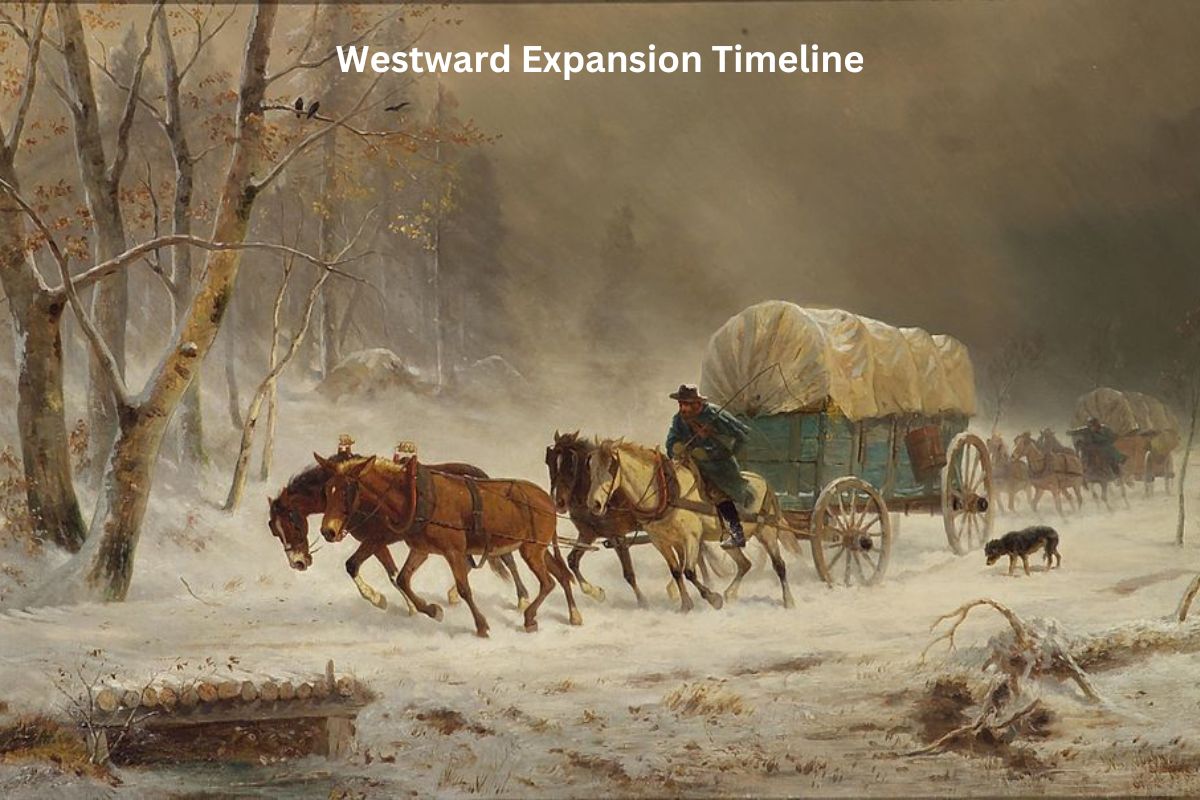Westward Expansion in the United States was a transformative period during the 19th century that witnessed the remarkable growth of the nation.
This movement was characterized by the westward migration of settlers, territorial acquisitions, and the development of the American frontier.
From the Louisiana Purchase and Lewis and Clark’s exploration to the gold rushes and the completion of the First Transcontinental Railroad, this expansion had profound impacts on the nation’s geography, culture, and history.
In this overview, we delve into key events and milestones that defined this monumental chapter in American history.
| Year | Event |
|---|---|
| 1803 | Louisiana Purchase |
| 1804-1806 | Lewis and Clark Expedition |
| 1812-1815 | War of 1812 |
| 1819 | Adams-Onís Treaty |
| 1820 | Missouri Compromise |
| 1830 | Indian Removal Act |
| 1836 | Texas Declaration of Independence |
| 1845 | Annexation of Texas |
| 1846-1848 | Mexican-American War |
| 1848 | Gold Rush in California |
| 1853 | Gadsden Purchase |
| 1862 | Homestead Act |
| 1869 | Completion of the First Transcontinental Railroad |
| Late 1800s | Land Rushes and Expansion |
| Late 1800s | Conflict with Native American Tribes |
| 1890 | Census Bureau Declares End of the Frontier |
Timeline of the Westward Expansion
1803: Louisiana Purchase
In 1803, the United States, under the leadership of President Thomas Jefferson, completed one of the most significant land acquisitions in its history. The Louisiana Purchase involved the purchase of a vast territory from France for $15 million, roughly doubling the size of the young nation.
Also Read: Timeline of the Donner Party
This land acquisition stretched from the Mississippi River to the Rocky Mountains and from the Gulf of Mexico to the Canadian border.
The Louisiana Purchase was a pivotal moment in American history as it opened up new lands for exploration, settlement, and economic development. It paved the way for westward expansion and the Lewis and Clark Expedition.
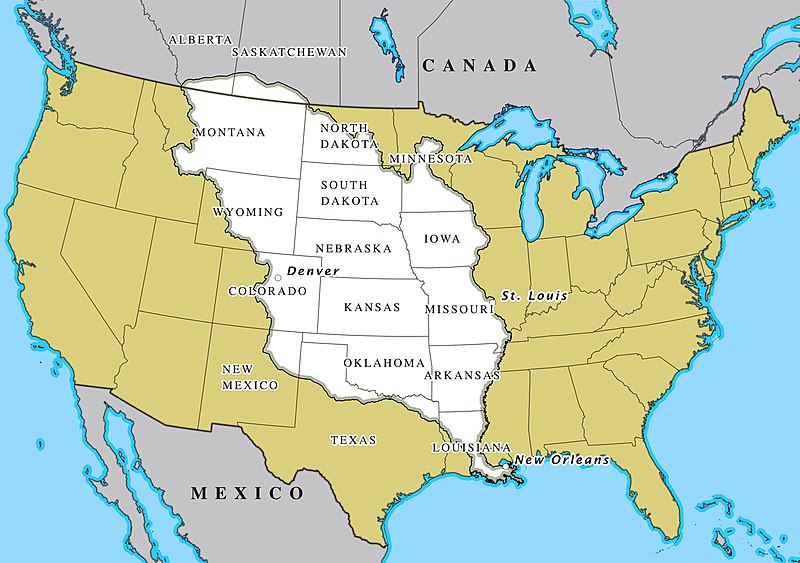
1804-1806: Lewis and Clark Expedition
The Lewis and Clark Expedition, also known as the Corps of Discovery Expedition, was commissioned by President Thomas Jefferson to explore the newly acquired Louisiana Territory and find a water route to the Pacific Ocean.
The expedition was led by Meriwether Lewis and William Clark, along with a team of explorers and guides. Departing from St. Louis, Missouri, in 1804, they embarked on a journey that took them up the Missouri River, through the Rocky Mountains, and ultimately to the Pacific Ocean, where they arrived in 1805.
Along the way, they documented flora, fauna, geography, and interactions with Native American tribes. Their findings and maps provided valuable information about the western lands, helping to pave the way for further exploration and settlement.
1812-1815: War of 1812
The War of 1812 was a conflict between the United States and Great Britain that had significant implications for westward expansion. It was primarily fought over issues like maritime rights, trade restrictions, and British support for Native American tribes resisting American expansion into the Northwest Territory.
During the war, several notable events occurred in the western frontier, including the Battle of Tippecanoe in 1811 and the British capture of Detroit in 1812. The war concluded in 1815 with the Treaty of Ghent, which essentially restored pre-war borders and didn’t significantly alter territorial boundaries.
However, the war did help solidify American control over the Northwest Territory and influenced later westward expansion, as settlers moved into the region with less fear of British interference and Native American resistance.

1819: Adams-Onís Treaty
The Adams-Onís Treaty, also known as the Transcontinental Treaty, was signed between the United States and Spain in 1819. This treaty had several important consequences for westward expansion.
Under its terms, the United States acquired Florida from Spain, settling ongoing disputes in the region. In return, the U.S. agreed to give up its claims to Spanish-held Texas. This treaty not only expanded U.S. territory but also removed a potential obstacle to further westward expansion in the southern region.
1820: Missouri Compromise
The Missouri Compromise of 1820 was a legislative effort to address the issue of slavery in the context of westward expansion. Missouri sought admission to the Union as a slave state, which would upset the balance between slave and free states.
To maintain this balance, Maine was admitted as a free state, and a line was drawn across the Louisiana Territory, designating Missouri as a slave state while prohibiting slavery in the northern portion of the territory (above the 36°30′ parallel).
The Missouri Compromise temporarily preserved peace between the North and South but did not resolve the underlying tensions over slavery.
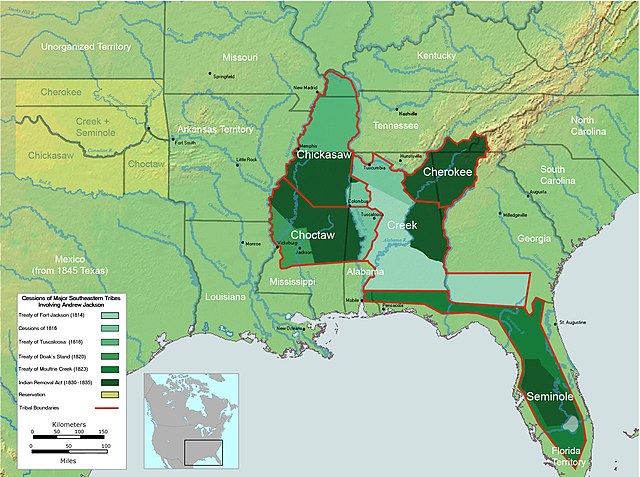
1830: Indian Removal Act
The Indian Removal Act of 1830, signed into law by President Andrew Jackson, was a controversial and tragic event in U.S. history.
It authorized the forced removal of several Native American tribes, including the Cherokee, Choctaw, Creek, Chickasaw, and Seminole, from their ancestral lands in the southeastern United States to lands west of the Mississippi River, in what is now Oklahoma.
The forced removal, often referred to as the Trail of Tears, resulted in the suffering and deaths of thousands of Native Americans due to exposure, disease, and harsh conditions during the journey. The Indian Removal Act further cleared the way for westward expansion by opening up valuable land for settlement and agriculture.
1836: Texas Declaration of Independence
The Texas Declaration of Independence, adopted on March 2, 1836, marked the beginning of the Texas Revolution. American settlers in Mexican-controlled Texas, led by figures like Sam Houston and Stephen F. Austin, had grown increasingly dissatisfied with Mexican rule, which they perceived as authoritarian.
The declaration proclaimed Texas an independent nation, known as the Republic of Texas. This declaration set the stage for the Texas Revolution and subsequent events, including the annexation of Texas by the United States.
1845: Annexation of Texas
Texas became an independent republic after the Texas Revolution but soon sought annexation by the United States. In 1845, the U.S. Congress approved the annexation of Texas as the 28th state of the United States.
This move sparked tensions with Mexico, which had never recognized Texas independence or its annexation by the United States. These tensions ultimately contributed to the outbreak of the Mexican-American War in 1846.
1846-1848: Mexican-American War
The Mexican-American War was a significant conflict that began in 1846 when fighting erupted along the disputed Texas-Mexico border. The war had several causes, including the annexation of Texas, territorial disputes, and U.S. expansionist goals.
The conflict saw notable battles such as the Battle of Buena Vista, the Siege of Veracruz, and the Battle of Chapultepec. It ended in 1848 with the signing of the Treaty of Guadalupe Hidalgo, which had profound effects on westward expansion.
The treaty ceded vast territories to the United States, including California, Arizona, New Mexico, and other southwestern lands. This acquisition of territory in the southwest greatly expanded the United States and contributed to the ongoing westward movement.
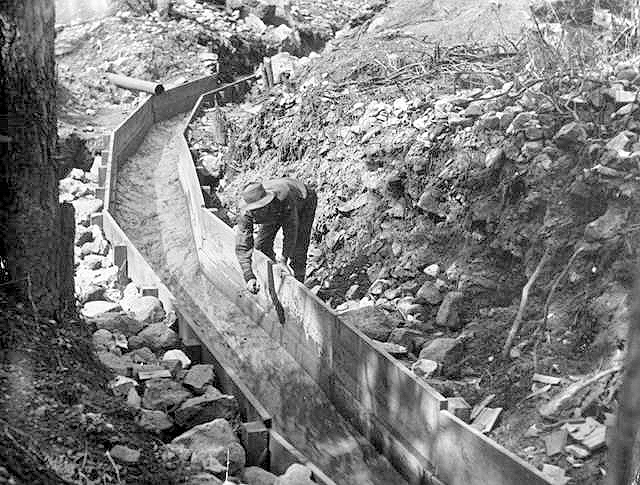
1848: Gold Rush in California
In 1848, gold was discovered at Sutter’s Mill in California, setting off the California Gold Rush. News of the discovery spread like wildfire, leading to a massive influx of people from across the United States and around the world who came to seek their fortunes in the goldfields.
The Gold Rush had a transformative effect on California’s population and economy, with cities like San Francisco experiencing rapid growth. This event not only accelerated westward expansion but also contributed to the development of the western frontier and the settlement of California.
1853: Gadsden Purchase
The Gadsden Purchase, also known as the “Treaty of La Mesilla,” was an agreement between the United States and Mexico. It was negotiated by U.S. Ambassador James Gadsden and Mexican President Manuel Peña y Peña.
The treaty was signed on December 30, 1853, and ratified by the U.S. Senate in 1854. The primary purpose of the Gadsden Purchase was to secure land for the construction of a southern transcontinental railroad route, which would link the southern states to the Pacific Coast.
The U.S. paid Mexico $10 million for a strip of land in present-day southern Arizona and New Mexico, providing a more suitable route for the railroad. The Gadsden Purchase facilitated transportation and trade across the continent and contributed to westward expansion.
1862: Homestead Act
The Homestead Act, signed into law by President Abraham Lincoln on May 20, 1862, was a landmark piece of legislation that encouraged westward expansion and settlement of the American frontier.
Under the act, any U.S. citizen, including freed slaves and women, could claim up to 160 acres of public land for a small fee, provided they improved the land by building a dwelling and cultivating crops. This act aimed to promote westward migration, stimulate agricultural development, and establish a stronger American presence on the frontier.
Over the course of several decades, hundreds of thousands of people acquired land through the Homestead Act, significantly contributing to the settlement and development of the western United States.
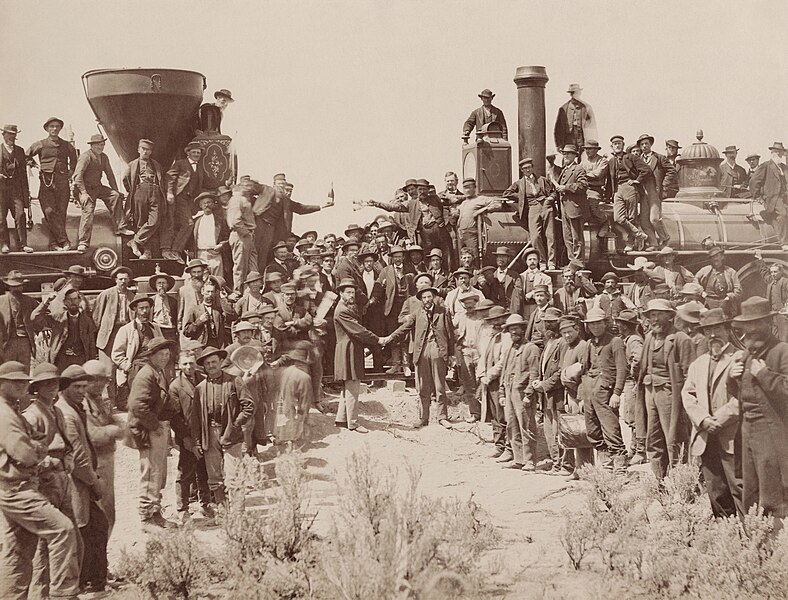
1869: Completion of the First Transcontinental Railroad
The completion of the First Transcontinental Railroad marked a significant milestone in westward expansion and the development of the American West.
The railroad project was undertaken by two major companies, the Central Pacific Railroad and the Union Pacific Railroad, with the two lines meeting at Promontory Summit, Utah, on May 10, 1869. The railroad not only provided a fast and efficient means of transportation across the continent but also facilitated the movement of people, goods, and resources.
It greatly reduced the time and cost required to travel from the eastern United States to the western territories, contributing to the settlement of the West and the growth of industries such as mining, agriculture, and ranching. The completion of the First Transcontinental Railroad is often seen as a symbol of national unity and progress.
Late 1800s: Land Rushes and Expansion
The late 1800s saw a series of land rushes and territorial expansions that further shaped the American West:
Oklahoma Land Rush (1889): The Oklahoma Land Rush, also known as the Land Run of 1889, was a significant event in which the U.S. government opened up large sections of unassigned land in Indian Territory (present-day Oklahoma) to settlers. Thousands of pioneers lined up at the starting points, and when the signal was given, they raced to claim their parcels of land. This event accelerated the settlement of Oklahoma, leading to the eventual admission of the territory as a state in 1907.
Cherokee Outlet Opening (1893): The Cherokee Outlet, a large strip of land in Oklahoma, was opened for settlement in 1893. Thousands of settlers rushed in to claim their plots of land, contributing to the rapid development of the region.
Alaska Purchase (1867): While not in the contiguous United States, the purchase of Alaska from Russia in 1867 expanded American territory into the northwestern part of North America. This acquisition, known as “Seward’s Folly” at the time, eventually proved to be rich in natural resources, including gold and oil, and played a significant role in U.S. westward expansion and development.
Late 1800s: Conflict with Native American Tribes
The late 1800s were marked by increasing conflicts between Native American tribes and settlers as the frontier continued to push westward:
Battle of Little Bighorn (1876): The Battle of Little Bighorn, also known as Custer’s Last Stand, was a major conflict between the U.S. Army’s 7th Cavalry and a coalition of Lakota Sioux, Cheyenne, and Arapaho tribes in Montana. Led by General George Custer, the U.S. forces suffered a devastating defeat in the battle, which became one of the most iconic events of the Indian Wars. It marked a moment of resistance by Native American tribes against further encroachment onto their lands.
Wounded Knee Massacre (1890): The Wounded Knee Massacre in South Dakota marked a tragic and violent end to the Indian Wars. U.S. troops confronted a band of Lakota Sioux at the Wounded Knee Creek, resulting in the deaths of many Native Americans, including women and children. This event symbolizes the end of the traditional Native American way of life and the closing of the western frontier.
1890: Census Bureau Declares End of the Frontier
n 1890, the U.S. Census Bureau declared that there was no longer a discernible frontier line in the United States. This declaration symbolized the closing of the American frontier, as virtually all available land had been settled or claimed.
It marked the end of an era of westward expansion, as the frontier, which had been a defining feature of American history for centuries, had been fully settled and developed.
